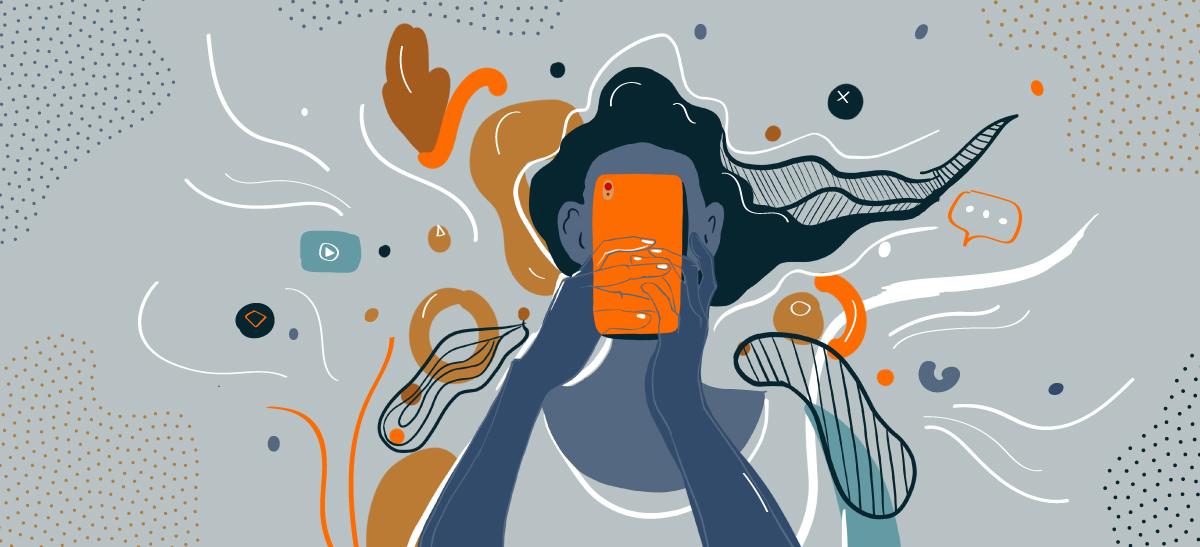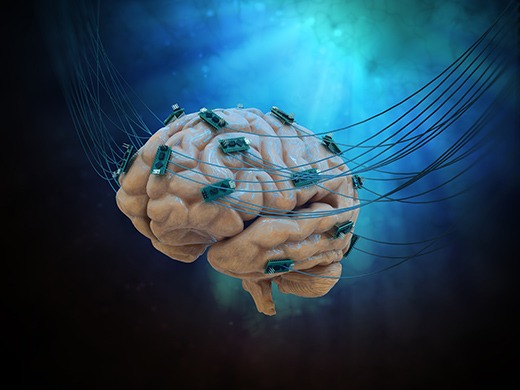
The Psychology of Digital Addiction and Tech Detoxing.
Digital addiction is a growing psychological and behavioral challenge caused by the compulsive use of smartphones, social media, and online platforms, which hijack the brain’s reward system and disrupt focus, sleep, and relationships. Tech detoxing offers a mindful approach to reclaim control, restore emotional balance, and foster healthier digital habits in an increasingly connected yet distracting world.
✨ Raghav Jain

The Rise of Digital Addiction: Understanding the New Age Compulsion
In an age where smartphones rarely leave our hands, and social media defines much of our social reality, the term digital addiction has become more than a buzzword—it’s a psychological phenomenon shaping human behavior on a global scale. This form of addiction refers to the compulsive use of digital devices and online platforms that interfere with daily life, work, relationships, and emotional well-being.
The roots of digital addiction are deeply intertwined with the psychology of reward and reinforcement. Each notification, like, or message acts as a microdose of dopamine—the brain’s “feel-good” chemical. This is the same neurotransmitter triggered by gambling, drugs, or even eating sugar. Over time, the brain begins to crave these digital rewards, creating a cycle of anticipation and gratification. The more we scroll, the more dopamine we chase, and the less satisfaction we ultimately feel.
Psychologists have linked this phenomenon to variable reward schedules, a principle derived from B.F. Skinner’s behaviorism research. Unlike predictable rewards, unpredictable ones—like the next viral post or text message—keep us hooked because our brains constantly anticipate the next “hit.” This unpredictability makes apps like Instagram, TikTok, or YouTube incredibly addictive. Users never know which post will bring joy, validation, or novelty—so they keep scrolling.
Adding to this, social validation theory explains why humans are naturally drawn to digital platforms. Humans are social creatures who crave acceptance. Online likes, comments, and followers simulate the feeling of being valued within a community, reinforcing repetitive behavior. Over time, people equate online approval with self-worth, leading to identity dependence on digital affirmation.
The pandemic years accelerated this attachment. Remote work, online classes, and digital entertainment blurred boundaries between the virtual and physical worlds. Many individuals began spending up to 10–12 hours a day online, and for some, this became the new normal. But while technology helped maintain connection during isolation, it also deepened dependency, creating a psychological paradox—we feel both connected and lonely.
From a neurological standpoint, studies using brain imaging reveal that digital addiction activates the same neural pathways as substance addictions. The nucleus accumbens—our brain’s reward center—lights up similarly in both cases. Prolonged exposure can dull the brain’s natural dopamine response, meaning people need increasing levels of stimulation to feel pleasure. This leads to digital fatigue, anxiety, and reduced motivation in offline activities.
Moreover, the illusion of multitasking further complicates matters. Constant switching between apps, tabs, and notifications gives the feeling of productivity but actually reduces cognitive performance by up to 40%. This fragmentation of attention is sometimes referred to as “continuous partial attention,” where the brain is always alert but never focused. As a result, people find it harder to concentrate, retain information, or experience deep flow states.
Psychologically, the consequences manifest in various forms:
- Anxiety and FOMO (Fear of Missing Out): The constant stream of updates makes users anxious about missing trends or opportunities.
- Sleep disorders: Late-night scrolling disrupts melatonin production and circadian rhythms, leading to insomnia or poor sleep quality.
- Depression and self-esteem issues: Constant comparison on social media fosters feelings of inadequacy and discontent.
- Reduced empathy: Excessive digital interaction can desensitize emotional responses, weakening real-world relationships.
Children and adolescents are particularly vulnerable. Their developing brains adapt quickly to reward cycles, making it difficult to set limits. Screen time often replaces outdoor play, creativity, and interpersonal communication—key components of emotional and social growth. Meanwhile, adults often justify their screen use as “work-related,” blurring the line between necessity and compulsion.
In essence, digital addiction thrives on a mix of biological reward systems, psychological needs, and cultural normalization. It’s not simply a lack of willpower—it’s a designed dependency, engineered by algorithms that exploit human psychology to maximize engagement. Recognizing this manipulation is the first step toward reclaiming control.
The Path to Tech Detoxing: Reclaiming Control and Balance
Tech detoxing, or digital detoxing, refers to consciously reducing or eliminating the use of digital devices to restore psychological balance and mental well-being. The goal isn’t to abandon technology but to redefine one’s relationship with it—to shift from compulsive use to mindful engagement.
The first step toward tech detoxing is awareness. Many individuals underestimate their screen time until they actively track it. Apps like “Digital Wellbeing” or “Screen Time” can help identify patterns of overuse. Once aware, users can begin setting boundaries—such as “no-phone zones” during meals, before bedtime, or during social gatherings.
From a psychological standpoint, detoxing requires reprogramming the dopamine-reward loop. Since digital stimulation provides instant gratification, the brain must be retrained to find pleasure in slower, more meaningful activities—like reading, nature walks, or in-person interactions. Research shows that after even 72 hours of reduced screen exposure, people report improved mood, focus, and sleep quality.
One effective strategy is the digital sabbath—a concept borrowed from religious rest days. It involves taking one day a week off from screens entirely. This not only refreshes the mind but also rebuilds appreciation for offline experiences. Families and workplaces have started adopting “tech-free weekends” to encourage real human interaction.
Another powerful approach is mindful technology use. This involves using digital tools intentionally rather than reactively. Instead of scrolling aimlessly, one might set a clear purpose—such as watching a specific tutorial or messaging a friend. Techniques like single-tasking, turning off notifications, and scheduling “scroll breaks” promote focus and reduce impulsivity.
Environmental cues also play a major role. Keeping devices out of reach, turning the phone to grayscale mode (reducing visual stimulation), or charging it outside the bedroom can drastically minimize temptation. Behavioral psychologists emphasize that modifying the environment often succeeds where sheer willpower fails.
For deeper digital dependence, therapy-based interventions like Cognitive Behavioral Therapy (CBT) have proven beneficial. CBT helps individuals identify thought patterns that drive compulsive digital use—such as “If I don’t reply immediately, people will forget me”—and replace them with healthier beliefs. Group therapy, digital wellness coaching, and online support communities (ironically, in moderation) can also provide structure and accountability.
Beyond the individual, organizations and governments are also recognizing digital burnout as a public health issue. Companies now encourage “right to disconnect” policies, where employees are not expected to respond to messages after work hours. Schools have introduced digital literacy programs teaching children about responsible online behavior and screen hygiene.
Another emerging trend is “digital minimalism,” popularized by author Cal Newport. This philosophy promotes intentional technology use aligned with one’s values. Instead of removing all digital tools, it encourages prioritizing only those that serve meaningful goals. The result is a simpler, calmer, and more fulfilling digital life.
Physiologically, tech detoxing has tangible effects. Reducing screen exposure lowers cortisol (the stress hormone), improves posture, and enhances eye health. Neurologically, the brain begins to reset its dopamine threshold, restoring sensitivity to everyday pleasures—like a good meal, conversation, or quiet reflection.
For some, a full detox retreat—where participants spend several days in nature without digital devices—can be transformative. Studies on such retreats show enhanced creativity, reduced anxiety, and improved mindfulness even weeks after returning to regular life.
Ultimately, digital detoxing is not about rejecting technology but reclaiming agency. Technology is a tool meant to serve human needs, not dominate them. The future of digital well-being lies in digital literacy, emotional regulation, and mindful engagement—a synergy between psychology and technology ethics.
The key to success lies in balance. Just as we practice nutritional moderation for physical health, we must practice digital moderation for mental health. Our devices can either empower or enslave us, depending on how consciously we use them.
In today’s hyperconnected world, digital technology has woven itself into every aspect of human life, transforming the way we communicate, work, learn, and even relax; yet, this digital revolution has also brought with it a silent psychological crisis—digital addiction. This form of modern dependency refers to the compulsive and uncontrollable use of digital devices, particularly smartphones, social media, and online platforms, to the extent that it interferes with one’s mental, emotional, and physical well-being. The psychology behind digital addiction is deeply rooted in how technology manipulates the brain’s reward system through the release of dopamine, the neurotransmitter responsible for pleasure and motivation. Every notification, message, or social media “like” acts as a small dopamine hit, creating a cycle of craving and reward that mirrors the mechanisms seen in substance abuse or gambling addictions. Tech companies, aware of this human vulnerability, design apps with persuasive algorithms and intermittent rewards that keep users hooked through unpredictability—a concept known in psychology as the “variable reward schedule.” Just like slot machines in casinos, users never know when they’ll receive the next burst of pleasure or validation, leading them to continuously scroll, swipe, or refresh. Over time, the brain begins to associate digital interactions with satisfaction and relief, causing a deep-seated behavioral dependency that reshapes attention span, self-control, and emotional regulation. This digital dependency also has social and psychological layers; humans are inherently social creatures, wired to seek validation and belonging, and social media platforms exploit this need by quantifying approval through likes, comments, and followers. This form of social validation reinforces identity dependence, where self-worth becomes tied to digital engagement rather than real-world experiences. Moreover, the “fear of missing out” (FOMO) amplifies anxiety, compelling individuals to remain constantly online to stay updated and relevant. This persistent connection leads to cognitive overload, disrupted sleep patterns, and a fragmented sense of focus—a condition known as “continuous partial attention,” where the mind is perpetually alert but never deeply present. Studies have shown that digital overuse can cause significant structural and functional changes in the brain, including reduced gray matter in areas responsible for impulse control and decision-making, as well as heightened activity in the amygdala, which governs fear and anxiety. The result is a paradoxical emotional state of feeling both connected and lonely, stimulated yet drained. Digital addiction not only impacts individuals but also transforms cultural and social dynamics. The normalization of constant connectivity has blurred the boundary between work and leisure, making it difficult to disengage from the digital sphere even after work hours. People wake up checking their phones and fall asleep scrolling, trapped in a cycle of digital consumption that numbs real emotions and relationships. For younger generations, who grow up surrounded by screens, the effects are even more pronounced; their neural pathways adapt to fast-paced digital feedback, leading to shorter attention spans, reduced patience, and dependency on instant gratification. Psychological studies have linked excessive screen time to anxiety disorders, depression, and reduced empathy, as online communication often lacks the non-verbal emotional cues essential for deep human connection. As this digital dependency deepens, the concept of tech detoxing emerges as a necessary psychological counterbalance—a conscious effort to reset one’s relationship with technology and restore cognitive and emotional equilibrium. Tech detoxing doesn’t imply rejecting technology altogether but instead encourages mindful engagement, where users control technology rather than being controlled by it. The first step in this process is awareness; most people underestimate their screen time and fail to recognize how frequently they reach for their devices out of boredom or habit. Tracking usage through built-in features like “Digital Wellbeing” or “Screen Time” can serve as an eye-opener. Once aware, individuals can establish boundaries—designating “no-phone zones” such as during meals, conversations, or before sleep—to create psychological space from constant stimulation. Gradual disconnection helps retrain the brain’s dopamine system, allowing it to rediscover pleasure in slower, more fulfilling activities such as reading, exercising, or spending time in nature. Neuroscientific studies suggest that even a 48-hour reduction in screen exposure can lower stress hormones, improve sleep quality, and enhance mood stability. Mindful technology practices further strengthen this detox process. Turning off non-essential notifications, setting app limits, and engaging in single-tasking (focusing on one digital activity at a time) promote deeper focus and cognitive restoration. Psychologists also recommend “digital sabbaths”—dedicated days without digital devices—to help individuals reconnect with themselves and their surroundings. Families can adopt “tech-free weekends” to rebuild emotional intimacy, while workplaces can encourage “right to disconnect” policies that respect mental health and work-life balance. Another effective approach lies in environmental restructuring; for instance, keeping phones out of bedrooms, using grayscale mode to reduce visual appeal, or replacing social media apps with reading or learning platforms. For those struggling with severe digital dependence, therapeutic interventions such as Cognitive Behavioral Therapy (CBT) can be transformative. CBT helps individuals identify and challenge the distorted thought patterns driving their compulsive behaviors—such as the belief that constant online presence equals social relevance—and replace them with healthier, self-affirming perspectives. Support groups and wellness retreats dedicated to digital detoxing are also gaining popularity, providing structured environments that promote mindfulness, physical activity, and nature immersion without the distraction of screens. From a physiological standpoint, digital detoxing resets the overstimulated nervous system, reducing cortisol levels, improving posture and vision, and restoring dopamine balance. It allows the brain to recover its natural sensitivity to everyday rewards—like face-to-face laughter, a creative hobby, or the serenity of quiet moments. The larger goal of tech detoxing extends beyond personal well-being; it represents a cultural shift toward conscious technology use and ethical design. As society becomes increasingly digitized, awareness of the psychological cost of constant connectivity becomes essential. Digital literacy—understanding not just how to use technology but how it uses us—is becoming a vital life skill. Psychologists and futurists argue that the future of mental health will depend on our ability to manage digital exposure and maintain authentic human connection amidst virtual noise. Ultimately, digital detoxing is about reclaiming autonomy in a world designed to steal attention. It’s a form of psychological resistance—a declaration that our minds and emotions are not commodities for algorithms. True well-being in the digital age lies not in abandoning technology but in mastering its influence, embracing moderation, and nurturing mindfulness. The human brain, though malleable, thrives on balance, and by consciously practicing tech detoxing, we can restore harmony between our digital and human selves, rediscovering presence, purpose, and peace in an age of distraction.
In the contemporary digital era, the ubiquitous presence of smartphones, social media platforms, and online services has fundamentally reshaped the human experience, creating a complex interplay between technology and psychology, wherein the compulsive engagement with digital devices has given rise to what is increasingly recognized as digital addiction, a condition characterized not simply by the frequency of device use but by the compulsive, uncontrollable, and sometimes detrimental patterns of interaction that interfere with emotional well-being, social relationships, productivity, and physical health, and which are rooted in deep-seated neurological and behavioral mechanisms that exploit the brain’s reward system through the intermittent release of dopamine, the neurotransmitter responsible for pleasure, motivation, and reinforcement learning, with each notification, message, or social media like serving as a small, potent burst of dopamine that reinforces repetitive engagement and fosters the craving for continuous stimulation, while tech companies, fully aware of human susceptibility to variable rewards, design algorithms to maximize user retention by offering unpredictable and intermittent digital rewards that create a slot-machine-like effect on attention and behavior, such that users are drawn into a loop of endless scrolling, swiping, and refreshing in anticipation of novel content, validation, or entertainment, thereby establishing a cycle of reward, craving, and temporary satisfaction that becomes increasingly difficult to interrupt and which over time rewires neural pathways associated with attention, impulse control, and emotional regulation, with research indicating that chronic overexposure to digital stimuli can reduce gray matter density in areas of the prefrontal cortex responsible for decision-making and self-regulation, heighten activity in the amygdala associated with stress and fear, and ultimately lead to diminished capacity for sustained focus, patience, and emotional resilience, while psychologically, the phenomenon of social validation plays a critical role, as humans are inherently social beings who seek connection, approval, and a sense of belonging, and social media platforms exploit this innate drive by providing quantifiable forms of social feedback, such as likes, shares, and comments, which create an association between digital engagement and self-worth, reinforcing the belief that one’s value is contingent on online recognition, and when combined with the fear of missing out, or FOMO, which compels constant monitoring of online updates to avoid perceived social exclusion, the result is a persistent state of vigilance, anxiety, and compulsive checking that further entrenches digital dependency, a condition exacerbated during periods of isolation or remote work, when digital platforms serve as primary conduits of social interaction, yet paradoxically contribute to loneliness, overstimulation, and reduced real-world interpersonal connection, leading to mental fatigue, irritability, sleep disruption, and a general sense of disconnection from one’s immediate environment, particularly in younger individuals whose developing brains are highly susceptible to reward-based conditioning, resulting in shorter attention spans, increased reliance on instant gratification, and difficulties in managing boredom or engaging in offline creative or social activities, and as digital addiction grows, so does the importance of addressing it through intentional interventions such as tech detoxing, which refers to the conscious reduction or temporary elimination of digital device use to restore cognitive, emotional, and physiological balance, recognizing that the goal is not complete disconnection but mindful engagement, wherein individuals reclaim control over their attention, focus, and time, and can rebuild healthy relationships with both technology and the physical world, beginning with self-awareness by tracking screen time to identify patterns of overuse, setting boundaries such as device-free zones during meals, social interactions, or before sleep, and implementing strategies like turning off non-essential notifications, using grayscale mode to reduce visual stimulation, or scheduling dedicated times for social media engagement, all of which help disrupt the compulsive reinforcement loops that maintain digital dependence, while also retraining the brain to experience pleasure and reward from slower, more meaningful activities such as reading, exercise, meditation, nature exposure, or in-person social interactions, which restore a natural dopamine balance and promote emotional resilience, and for individuals with deeper levels of digital dependency, evidence-based therapeutic interventions such as Cognitive Behavioral Therapy (CBT) can facilitate the identification and restructuring of maladaptive thought patterns that perpetuate compulsive technology use, helping individuals replace beliefs such as “I must respond immediately to messages to remain relevant” with healthier cognitive frameworks that support delayed gratification, self-efficacy, and intentionality in technology use, while structured support systems including digital detox retreats, wellness programs, or peer accountability groups provide immersive environments that reduce digital distractions and cultivate mindfulness, creativity, and social presence, all of which contribute to sustained behavioral change, and at a societal level, organizations and institutions are increasingly recognizing the psychological cost of constant connectivity, with initiatives such as the right-to-disconnect policies in workplaces, digital literacy education in schools, and promotion of tech-free time in family and community settings reflecting a broader commitment to digital well-being, ultimately emphasizing that digital addiction is not merely a matter of personal willpower but a complex interaction between neurobiology, psychology, and culturally normalized technology use, and that tech detoxing, whether through daily mindful practices, structured periods of disconnection, or lifestyle redesign, provides a powerful pathway to regain agency over one’s attention and cognitive resources, improve mental health, strengthen real-world relationships, enhance sleep quality, and reestablish a sense of presence and purpose in daily life, and while complete digital abstinence may not be feasible or even desirable in the modern world, cultivating intentional, balanced, and value-driven engagement with technology represents a sustainable solution, allowing individuals to harness the benefits of connectivity while mitigating the negative impacts of compulsive use, thereby reclaiming not only mental clarity and emotional stability but also the deeper human capacity for reflection, creativity, empathy, and authentic connection that are often undermined by the relentless pace and seductive design of the digital environment.
Conclusion
Digital addiction is a modern psychological dilemma born from the intersection of neuroscience, social validation, and corporate design. It hijacks our attention, alters our emotions, and shapes our identity through invisible psychological mechanisms. However, through awareness, discipline, and mindfulness, individuals can break free from this cycle.
Tech detoxing provides a roadmap to reclaim autonomy over our attention and emotions. By setting limits, practicing mindfulness, and redesigning our environments, we can rediscover the joy of genuine human connection and inner stillness. The goal isn’t disconnection from technology—but reconnection with ourselves.
Q&A Section
Q1: What exactly is digital addiction?
Ans: Digital addiction refers to the compulsive and excessive use of digital devices, apps, or the internet that disrupts normal life, work, or relationships. It operates similarly to behavioral addictions, driven by dopamine release and psychological dependence on digital rewards.
Q2: How does digital addiction affect the brain?
Ans: It activates the brain’s reward system, releasing dopamine and reinforcing compulsive behavior. Over time, this leads to tolerance—meaning the person needs more screen time for the same satisfaction—and withdrawal symptoms when offline.
Q3: What are common signs of digital addiction?
Ans: Common signs include constant phone checking, anxiety without internet access, reduced productivity, disturbed sleep, irritability when disconnected, and neglect of real-life relationships or responsibilities.
Q4: Can digital addiction be as serious as substance addiction?
Ans: Yes. Neurologically, both activate the same reward circuits and cause similar behavioral patterns—compulsion, tolerance, and withdrawal. Though digital addiction may not cause physical harm, its psychological and social consequences are profound.
Q5: What are effective strategies for tech detoxing?
Ans: Strategies include setting screen-time limits, disabling notifications, practicing mindful tech use, scheduling digital-free hours, engaging in offline hobbies, and participating in digital detox retreats or therapy if necessary.
Similar Articles
Find more relatable content in similar Articles

Neurotechnology: Connecting th..
Neurotechnology is revolutioni.. Read More

The Psychology of Digital Addi..
Digital addiction is a growing.. Read More

E-Ink Smartphones: The Next Mi..
E-Ink smartphones are redefini.. Read More

Holographic Displays: Will You..
“Exploring the Future of Commu.. Read More
Explore Other Categories
Explore many different categories of articles ranging from Gadgets to Security
Smart Devices, Gear & Innovations
Discover in-depth reviews, hands-on experiences, and expert insights on the newest gadgets—from smartphones to smartwatches, headphones, wearables, and everything in between. Stay ahead with the latest in tech gear
Apps That Power Your World
Explore essential mobile and desktop applications across all platforms. From productivity boosters to creative tools, we cover updates, recommendations, and how-tos to make your digital life easier and more efficient.
Tomorrow's Technology, Today's Insights
Dive into the world of emerging technologies, AI breakthroughs, space tech, robotics, and innovations shaping the future. Stay informed on what's next in the evolution of science and technology.
Protecting You in a Digital Age
Learn how to secure your data, protect your privacy, and understand the latest in online threats. We break down complex cybersecurity topics into practical advice for everyday users and professionals alike.
© 2025 Copyrights by rTechnology. All Rights Reserved.